Tedori-Callinan Distinguished Lecture Series
2025 Lecture: “Robotic Predictions are Hard, Especially About the Future”
Presented by: Joel Burdick
Tuesday, November 4, 2025
10:15 a.m.
Wu & Chen Auditorium
101 Levine Hall
Abstract
Many autonomous systems (e.g, driverless cars and drones) must make decisions based on predictions of the future actions of other nearby agents, whose dynamics and intentions are unknown. E.g., autonomous cars must predict the motions of surrounding vehicles, pedestrians and bicycles. Autonomous racing drones must avoid crashing into other drones on the race course. Unfortunately, only partial and noisy data on the motions of these potential hazards are available. This talk will introduce a novel method to approximate, in real-time, a predictive Koopman operator for each potential hazard from noisy data, quantify the uncertainty of the future predictions, and use the quantified predictions to provide probabilistic collision avoidance guarantees within a real-time model predictive control framework. Experiments with ground robots, a drone, and a semi-autonomous crane on an ocean going vessel will illustrate the ideas.
Biography
Joel Burdick is the Richard and Dorothy Hayman Professor of Mechanical Engineering. He received his undergraduate degrees in mechanical engineering and chemistry from Duke University and M.S. and Ph.D. degrees in mechanical engineering from Stanford University. He has been with the department of Mechanical Engineering at the California Institute of Technology since May 1988, where he has been the recipient of the NSF Presidential Young Investigator award, the Office of Naval Research Young Investigator award, and the Feynman fellowship. Prof. Burdick has also received the ASCIT award for excellence in undergraduate teaching and the GSA award for excellence in graduate student education. He was a coauthor on the best paper award for the IEEE International Conference on Robotics and Automation in 2020, and a finalist for this award in 1993, 1999, 2000, and 2005, 2016. He received the Popular Mechanics Breakthrough Award in 2011. In addition to his position in Mechanical Engineering, Prof. Burdick has also appointments the Dept. of Control and Dynamical Systems and Medical Engineering.
Past Speakers in the Series
2024 Fall Lecture: Gareth McKinley, Massachusetts Institute of Technology
Gareth H. McKinley
Professor of Teaching Innovation and Interim Head of the Department of Mechanical Engineering, Massachusetts Institute of Technology
Title: “Novel Passive and Active Approaches to Fluid Friction Reduction using Polymers & Plastrons”
Abstract: When a superhydrophobic (SH) textured surface is immersed in water it traps a thin shiny layer of air within the texture that is known as a plastron. Contact line pinning stabilizes this Cassie-Baxter state and the patches of air trapped in the texture can act as shear-free regions that locally lower the frictional dissipation. Recent developments of scalable manufacturing methods for producing robust SH surfaces open new possibilities for using these textures in drag reduction applications. We use a newly-developed bespoke Taylor-Couette (TC) apparatus to compare and contrast frictional drag reduction by dilute polymer solutions and superhydrophobic (SH) surfaces in turbulent flows for Reynolds numbers over a wide range (10,000 < Re < 100,000). By applying SH coatings to the inner rotating cylinder, we can evaluate the drag reducing performance and robustness of different textures and calculate the effective slip length in turbulent flow using a suitably augmented Prandtl-von Kármán (PvK) analysis. We also investigate how these plastrons can be partially stabilized against turbulent pressure fluctuations using active heating as well as chemical methods to locally regenerate vapor. Additionally, we can use our apparatus to revisit an alternative drag-reducing strategy using dilute solutions of various high molecular weight polymers. We show that natural polysaccharides derived from plant mucilage can be an inexpensive and effective alternative to costly synthetic polymers, whilst still approaching the same maximum drag reduction (MDR) asymptote. Finally, we explore combinations of these two complementary drag reduction methods – one arising from wall slip and the other due to changes in turbulence dynamics in the bulk flow – and find that the two effects are not always additive; interestingly, the effectiveness of polymer drag reduction can actually be reduced in the presence of a SH coating on the wall.
Biography: Gareth H. McKinley FRS is the School of Engineering Professor of Teaching Innovation and former Associate Head and Interim Head of the Department of Mechanical Engineering at MIT. His research interests include extensional rheometry, microfluidic rheometry and non-Newtonian fluid dynamics. He is a co-founder of Cambridge Polymer Group and a member of the Scientific Advisory Boards of Rheosense Inc. and ActNano Inc. He is the author of over 370 technical publications and has won the Publication Award of the Society of Rheology twice (2007; 2022) as well as the 2021 Walters Award from J. Non-Newtonian Fluid Mechanics. He was awarded the Bingham Medal of The Society of Rheology in 2013, the Gold Medal from the British Society of Rheology in 2014 and the G.I.Taylor Medal from the Society for Engineering Science (SES) in 2022. In 2019 he was elected to the National Academy of Engineering and also inducted as a Fellow of the Royal Society of London. In 2023 he was awarded an honorary degree from the Katholike University of Leuven (KU/Leuven) and in 2024 he became a Corresponding Member of the Australian Academy of Sciences (AAS).
2024 Spring Lecture: Glaucio H. Paulino, Princeton University
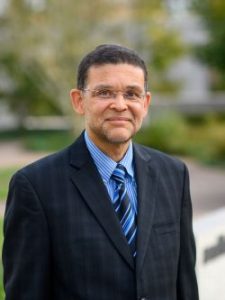 Glaucio H. Paulino
Glaucio H. Paulino
Margareta E. Augustine Professor of Engineering, Princeton University
Title: “Origami”
Abstract: We study the geometric mechanics of origami assemblages and investigate how geometry affects behavior and properties. Understanding origami from a structural standpoint allows for conceptualizing and designing feasible applications across scales and disciplines of engineering. We review the basic mathematical rules of origami and use 3D-printed origami legos to illustrate those concepts. We then present a reduced-order-model, which consists of an improved bar-and-hinge model, to simulate origami assemblages. We explore the stiffness of tubular origami and kirigami structures based on the Miura-ori folding pattern. A unique orientation for zipper coupling of rigidly foldable origami tubes substantially increases stiffness in higher order modes and permits only one flexible motion through which the structure can deploy. We couple compatible origami tubes into a variety of cellular assemblages that enhances mechanical characteristics and geometric versatility, leading to the design of structures and configurational metamaterials that can be deployed, stiffened, and tuned. We have designed, fabricated (using DLW, direct laser writing), and tested (in-situ SEM) this metamaterial at the micron-scale. This resulted not only in the smallest scale origami assembly, but also in a metamaterial with intriguing mechanical properties, such as anisotropy, reversible auxeticity, and large degree of shape recoverability. The presentation concludes with a vision toward the field of origami engineering, including origami robots with distributed actuation, allowing for on-the-fly programmability, and other interdisciplinary applications.
Bio: Professor Paulino is the Margareta E. Augustine Professor of Engineering at Princeton University. His seminal contributions in the area of computational mechanics include the development of methodologies to characterize the deformation and fracture behavior of existing and emerging materials; topology optimization for large-scale multiscale/multiphysics problems; variational methods; deployable and adaptable structures; and origami engineering (topic of the lecture today). He is a fellow of ASME, EMI, AAM, USACM and IACM, and SES. Recently, he received Daniel C. Drucker Medal of ASME (2020), the Raymond D. Mindlin Medal of ASCE (2020), the Reddy Medal from Mechanics of Advanced Materials and Structures (MAMS 2020), and the Eringen Medal from SES (2023). He also received the 2015 Cozzarelli Prize from the National Academy of Sciences, “which recognizes recently published PNAS papers of outstanding scientific excellence and originality.” He is a member of the US National Academy of Engineering (NAE), and a former President of SES. More information about his research and professional activities can be found at the following link: http://paulino.princeton.edu/
2022 Fall Lecture: Melanie L. Hunt, California Institute of Technology
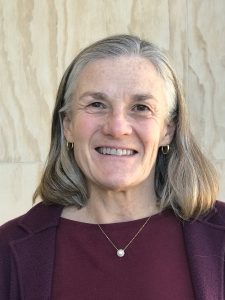 Melany L. Hunt
Melany L. Hunt
Dotty and Dick Hayman Professor of Mechanical Engineering, California Institute of Technology
Title: “Mixing of Granular Materials, Inertial Suspensions, and Cement”
Abstract: Flows of particulate materials are ubiquitous in nature and industry. Predictions of flow rates and mixing times rely on an understanding of the rheological properties of the materials, which can differ considerably from that associated with a single-phase fluid. This presentation highlights some unique features of granular materials and inertial suspensions and includes recent experimental results. In addition, the seminar overviews new work related to the mixing and gaseous diffusion in cement. Cement production releases significant amount of carbon dioxide; carbon dioxide can be partially reabsorbed into cement by diffusion through the multiphase material. The ongoing research includes modeling of the carbon dioxide uptake and considers ways to accelerate the process, such as mixing with the cement paste.
Bio: Melany L. Hunt is the Dotty and Dick Hayman Professor of Mechanical Engineering at the California Institute of Technology. Her research work involves transport and mechanics in multiphase systems, including granular material flows, dense liquid-solid flows, fluidized beds, powders, and booming sand dunes. She received her bachelor’s degree from the University of Minnesota, Minneapolis and her masters and doctorate from the University of California, Berkeley. At Caltech she has served in a variety of roles, including executive officer of mechanical engineering and vice provost. She has won awards for teaching, research, and mentoring, including Caltech’s 2019 Richard P. Feynman Teaching Prize and the 2022 Agent of Change Award for her efforts around diversity, equity, and inclusion. She was recently elected vice chair of the US National Committee on Theoretical and Applied Mechanics of the National Academies.
2022 Spring Lecture: Cristina Amon, University of Toronto
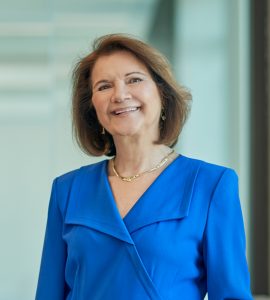 Cristina H. Amon
Cristina H. Amon
Alumni Distinguished Professor in Bioengineering, and Dean Emerita, Faculty of Applied Science and Engineering, University of Toronto
Title: “Multiscale Hierarchical Modeling and Thermal Management of Electrification Technologies”
Abstract: Core electrification technologies require developments in battery packs, chargers, electric motors, and thermal management strategies to improve their performance, longevity, reliability and safety. The next battery technology leap relies on novel thermal management strategies and packaging architectures, realized as intelligent battery thermal management systems (BTMS), which can optimally control the thermo-electrochemical phenomena occurring inside the batteries to maximize performance, minimize degradation, enable fast-charging protocols, and accelerate a seamless transition of degraded electric vehicle (EV) batteries into less-demanding second-life stationary systems. This Lecture will present current engineering challenges and opportunities on EV thermal management, with a focus on our research on multiscale hierarchical design, modelling, and optimization approaches to overcome cooling and heating challenges across multiple physical domains and length scales, from battery electrodes, to battery cells, battery packs, to EV thermal management systems.
Bio:
Cristina Amon is Alumni Distinguished Professor and Dean Emerita of the Faculty of Applied Science and Engineering at the University of Toronto. Prior to joining U of T in 2006, she was the Raymond J. Lane Distinguished Professor and Director of the Institute for Complex Engineered at Carnegie Mellon University. She has pioneered the field of Computational Fluid Dynamics and the development of multidisciplinary multiscale hierarchical modelling, concurrent design and optimization methodologies for thermo-fluid transport phenomena, with applications to renewable energy, biomedical devices, and thermal management of electronics and electric vehicles.
Professor Amon was appointed to the Order of Canada and inducted into the Canadian Academy of Engineering, Hispanic Engineer Hall of Fame, Royal Society of Canada, Spanish Royal Academy and National Academy of Engineering.
Cristina Amon is the founding chair of the Global Engineering Deans Council and has served in numerous editorial and technical conference roles, advisory and review boards in North America and abroad. She received her Mechanical Engineering degree from Simon Bolivar University in Venezuela, and her M.S. and Sc.D. from the Massachusetts Institute of Technology.
2021 Lecture: Zhigang Suo, Harvard University
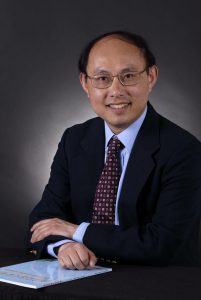 Zhigang Suo
Zhigang Suo
Allen E. and Marilyn M. Puckett Professor of Mechanics and Materials, Harvard University
Title: “Resist Fatigue by De-concentrating Stress”
Abstract: Most materials suffer from a disease: fatigue. Symptoms include degradation of properties and growth of cracks under cyclic stretch. These materials are unfit for applications involving prolonged and cyclic loads. A crack grows in a material because the crack tip concentrates stress. Recently, we have been developing fatigue-resistant materials by de-concentrating stress, through mechanisms at either microstructural or molecular scale. This talk describes the mechanics and implementations in materials.
Bio: Zhigang Suo is Allen E. and Marilyn M. Puckett Professor of Mechanics and Materials at Harvard University. He earned a bachelor’s degree from Xi’an Jiaotong University in 1985, and a Ph.D. degree from Harvard University in 1989. Suo joined the faculty of the University of California at Santa Barbara in 1989, Princeton University in 1997, and Harvard University in 2003. His research centers on the mechanical behavior of materials.
2019 Lecture: Thomas J.R. Hughes, University of Texas at Austin
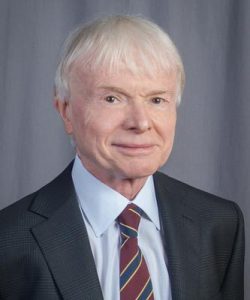 Thomas J.R. Hughes
Thomas J.R. Hughes
Peter O’Donnell Jr. Chair in Computational and Applied Mathematics; and Professor, Department of Aerospace Engineering and Engineering Mechanics, University of Texas at Austin
Title: “Isogeometric Analysis”
Abstract:
The vision of Isogeometric Analysis was first presented in a paper published October 1, 2005 [1]. Since then it has become a focus of research within both the fields of Finite Element Analysis (FEA) and Computer Aided Design (CAD) and is rapidly becoming a mainstream analysis methodology and a new paradigm for geometric design [2]. The key concept utilized in the technical approach is the development of a new foundation for FEA, based on rich geometric descriptions originating in CAD, resulting in a single geometric model that serves as a basis for both design and analysis.
In this overview, I will describe some areas in which progress has been made in developing improved methodologies to efficiently solve problems that have been at the very least difficult, if not impossible, within traditional FEA. I will also describe current areas of intense activity and areas where problems remain open, representing both challenges and opportunities for future research (see, e.g., [3,4]).
REFERENCES
[1] T.J.R. Hughes, J.A. Cottrell and Y. Bazilevs, Isogeometric Analysis: CAD, Finite Elements, NURBS, Exact Geometry and Mesh Refinement, Computer Methods in Applied Mechanics and Engineering, 194, (2005) 4135-4195.
[2] J.A. Cottrell, T.J.R. Hughes and Y. Bazilevs, Isogeometric Analysis: Toward Integration of CAD and FEA, Wiley, Chichester, U.K., 2009.
[3] Special Issue on Isogeometric Analysis, (eds. T.J.R. Hughes, J.T. Oden and M. Papadrakakis), Computer Methods in Applied Mechanics and Engineering, 284, (1 February 2015), 1-1182.
[4] Special Issue on Isogeometric Analysis: Progress and Challenges, (eds. T.J.R. Hughes, J.T. Oden and M. Papadrakakis), Computer Methods in Applied Mechanics and Engineering, 316, (1 April 2017), 1-1270.
Bio:
Dr. Hughes holds B.E. and M.E. degrees in Mechanical Engineering from Pratt Institute and an M.S. in Mathematics and Ph.D. in Engineering Science from the University of California at Berkeley. He taught at Berkeley, Caltech and Stanford before joining the University of Texas at Austin. At Stanford he served as Chairman of the Division of Applied Mechanics, Chairman of the Department of Mechanical Engineering, Chairman of the Division of Mechanics and Computation, and held the Mary and Gordon Crary Family Chair of Engineering.
He is co-editor of the international journal Computer Methods in Applied Mechanics and Engineering, a founder and past President of USACM and IACM, past Chairman of the Applied Mechanics Division of ASME, and past Chairman of the U.S. National Committee on Theoretical and Applied Mechanics (USNC/TAM).
Dr. Hughes is an elected member of the U.S. National Academy of Sciences, the U.S. National Academy of Engineering, the American Academy of Arts and Sciences, and the Academy of Medicine, Engineering and Science of Texas, and a Foreign Member of the Royal Society of London, the Austrian Academy of Sciences (Section for Mathematics and the Physical Sciences), and the Istituto Lombardo Accademia di Scienze e Lettere (Mathematics Section).
Dr. Hughes is one of the most widely cited authors in Engineering Science. He has been elected to Distinguished Member, ASCE’s highest honor, and has received ASME’s highest honor, the ASME Medal. He has also received the Huber Prize and Von Karman Medal from ASCE, the Timoshenko, Worcester Reed Warner, and Melville Medals from ASME, the Von Neumann Medal from USACM, the Gauss-Newton Medal from IACM, the SIAM/ACM Prize in Computational Engineering Science, and many other national and international awards.
Dr. Hughes has received honorary doctorates from the Université catholique de Louvain, the University of Pavia, the University of Padua, the Norwegian University of Science and Technology (Trondheim), Northwestern University (Evanston), and the University of A Coruña.
The Special Achievement Award for Young Investigators in Applied Mechanics is an award given annually by the Applied Mechanics Division of ASME. In 2008 this award was renamed the Thomas J.R. Hughes Young Investigator Award.
In 2012 the Computational Fluid Mechanics Award of the United States Association for Computational Mechanics was renamed the Thomas J.R. Hughes Medal.
Dr. Hughes has delivered multiple plenary lectures at World Congresses of Computational Mechanics and United States National Congresses of Computational Mechanics. He also has been a plenary lecturer at the International Congress of Mathematicians.
2018 Lecture: Richard D. James, University of Minnesota
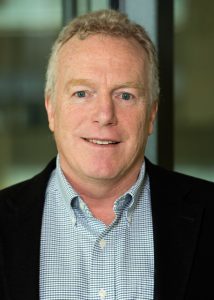 Richard D. James
Richard D. James
Distinguished McKnight University Professor, Department of Aerospace Engineering and Mechanics, University of Minnesota
Title: “Atomistically Inspired Origami”
Abstract: World population is growing approximately linearly at about 80 million per year. As time goes by, there is necessarily less space per person. Perhaps this is why the scientific community seems to be obsessed with folding things. We present a mathematical approach to “rigid folding” inspired by the way atomistic structures form naturally. Their characteristic features in molecular science imply desirable features for macroscopic structures, especially 4D structures that deform. Origami structures, in turn, suggest an unusual way to look at the Periodic Table.
Bio: Richard D. James is Distinguished McKnight University Professor at the University of Minnesota. He has a Sc.B. in Engineering from Brown University and a Ph.D. in Mechanical Engineering from the Johns Hopkins University. He has authored or co-authored 150 articles, has given 50 plenary or named lectureships, and was awarded the Humboldt Senior Research Award (2006/7), the Warner T. Koiter Medal from ASME (2008), the William Prager Medal from the Society of Engineering Science (2008), the Brown Engineering Alumni Medal (2009) and the Theodore von Karman prize from SIAM (2014). James’ current research concerns the study of “Objective Structures”, a mathematical way of looking at the structure of matter, the hysteresis and reversibility of solid-solid phase transformations, and the direct conversion of heat to electricity using transformations in multiferroic materials.
2017 Lecture: Gang Chen, Massachusetts Institute of Technology
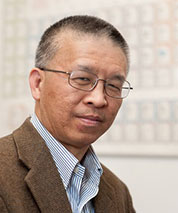 Gang Chen
Gang Chen
Carl Richard Soderberg Professor of Power Engineering & Head of the Department of Mechanical Engineering,
Massachusetts Institute of Technology
Title: “Innovations in Materials and Devices for Efficient Solar and Thermal Energy Utilization”
Abstract: Human history has very much depended on how we used heat from the sun and terrestrial sources. Over 90% of human society’s energy input is used by first converting it into heat, and yet only 40% of the total energy input is utilized, significantly lower than what the second law of thermodynamics allows. Understanding of basic heat carrier transport and energy conversion at nanoscale can lead to new materials and devices to improve the efficiency of heat utilization. This talk will present some of our work on developing advanced materials and devices to improve the efficiency of solar and thermal energy conversion devices and systems. To lower the cost of solar energy to electricity conversion, we use nanostructures to reduce the thickness of crystalline silicon thin-film solar cells and optically-transparent and thermally-insulating aerogels to replace the vacuum-tube solar collectors in concentrated solar thermal systems. We improve thermoelectric materials via nanostructuring and demonstrate significant improvements in the efficiency of solar thermoelectric energy conversion devices. We also demonstrate the ability of boiling water under unconcentrated sunlight using spectrally selective surfaces. For terrestrial thermal systems, we show that by reflecting infrared radiation back to its emitting heat source, we can significantly improve the efficiency of converting thermally-radiated photons into electricity via thermophotovoltaic devices and the luminous efficiency of incandescent light bulbs. We can turn a battery into an efficient thermal-to-electrical energy converter by cycling it between high and low temperatures. Although polymers are usually thermal insulators, we show that they can be made as thermally conductive as metals by aligning molecular orientations. With properly chosen polymer fiber diameters, we design fabrics so that they are opaque to visible light and yet allow thermal radiation from human body to escape to environment for passively cooling. Nanoscience foundations behind these diverse innovations will be explained along the way.
Bio:Gang Chen is currently the Head of the Department of Mechanical Engineering and Carl Richard Soderberg Professor of Power Engineering at Massachusetts Institute of Technology (MIT), and is the director of the “Solid-State Solar-Thermal Energy Conversion Center (S3TEC Center)” – an Energy Frontier Research Center funded by the US Department of Energy. He obtained his PhD degree from the Mechanical Engineering Department, UC Berkeley. He was a faculty member at Duke University and UCLA, before joining MIT in 2001. He received an NSF Young Investigator Award, an R&D 100 award, an ASME Heat Transfer Memorial Award, a Nukiyama Memorial Award by the Japan Heat Transfer Society, a World Technology Network Award in Energy, an Eringen Medal from the Society of Engineering Science, and the Capers and Marion McDonald Award for Excellences in Mentoring and Advising from MIT. He is a fellow of American Association for Advancement of Science, APS, ASME, and Guggenheim Foundation. He is an academician of Academia Sinica and a member of the US National Academy of Engineering.
2016 Lecture: Jayathi Y. Murthy, University California, Los Angeles
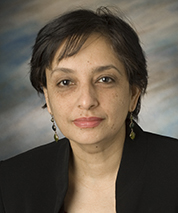 Jayathi Y. Murthy
Jayathi Y. Murthy
Dean, Henry Samueli School of Engineering and Applied Science
University of California, Los Angeles
Title: “Topology Optimization for Thermal-Fluid Problems Using Unstructured Finite Volume Schemes”
Abstract: Topology optimization is a method for developing optimized geometric designs that maximize a quantity of interest (QoI) subject to constraints. Unlike shape optimization, which optimizes the dimensions of a template shape, topology optimization does not start with a pre-conceived shape. Instead, the algorithm builds the geometry iteratively by placing material pixels in a specified background domain, aiming to maximize the QoI subject to a constraint on the volume of material or other constraints. The power of topology optimization lies in its ability to realize design solutions that are not initially apparent to the engineer. Topology optimization, though well established in structural applications, has not percolated to the thermal-fluids community to any great degree. However, the methodology has immense application potential in the area of fluid flow, heat and mass transfer, particularly with the advent of 3D printing. In this talk, we describe recent work on topology optimization based on widely-used unstructured finite volume schemes employing co-located sequential pressure-based solvers. In our work, the solid isotropic material with penalization (SIMP) approach is used in conjunction with a gradient-based optimization algorithm. Sensitivity derivatives of the QoI with respect to design variables are computed through a discrete adjoint method. The Method of Moving Asymptotes (MMA) is used for optimization. A hallmark of sequential pressure-based methods schemes is that the complete Jacobian is never assembled, causing difficulties with using gradient-based schemes. An important contribution of the work is the development of an automatic differentiation library, Rapid, to compute accurate Jacobians and other necessary derivatives to address this issue. An essential feature of Rapid is that it is not necessary to write new code to find sensitivities when new physics, such as turbulence models, are added, or when new cost functions are considered. The methodology is demonstrated on a variety of heat conduction and laminar and turbulent flow and heat transfer problems. The methodologies developed here are very general and are easily translated to use in industry, and for problems with more complex physics and more realistic constraints.
Bio: Jayathi Murthy is Dean of the Henry Samueli School of Engineering and Applied Science and Distinguished Professor of Mechanical Engineering at UCLA. She received her Ph.D degree from the University of Minnesota in the area of numerical heat transfer and has worked in both academia and in industry. She served as Director of PRISM: NNSA Center for Prediction of Reliability, Integrity and Survivability of Microsystems at Purdue University. During her employment at Fluent Inc., a leading vendor of CFD software, she developed the unstructured solution-adaptive finite volume methods underlying their flagship software Fluent, and the electronics cooling software package ICEPAK. More recently, her research has addressed sub-micron thermal transport, multiscale multiphysics simulations of MEMS and NEMS and uncertainty quantification in these systems. She is the recipient of the IBM Faculty Partnership award 2003-2005, numerous best paper awards, the 2009 ASME EPPD Woman Engineer of the Year Award and the 2012 ASME EPPD Clock Award. In 2012, she was named a distinguished alumna of IIT Kanpur, India, and was recently named a recipient of the ASME Heat Transfer Memorial Award. Prof. Murthy serves on the editorial boards of Numerical Heat Transfer and International Journal of Thermal Sciences and is an editor of the 2nd edition of the Handbook of Numerical Heat Transfer. She has served on numerous national committees and panels on electronics thermal management and CFD, and is the author of over 280 technical publications.
2015 Lecture: Albert (Al) P. Pisano, University of California, San Diego
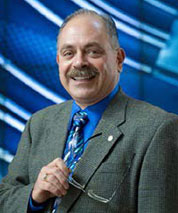 Albert (Al) Pisano
Albert (Al) Pisano
Dean, College of Engineering
Dean, Jacobs School of Engineering, Walter J. Zable Chair in Engineering, Member, US National Academy of Engineering, Distinguished Professor, Mechanical and Aerospace Engineering, Electrical and Computer Engineering, UC, San Diego
Title: “Dry Nanoprinting”
Abstract:In this seminar, recent results in the dry nanoprinting of a number of structures and devices will be presented. Dry nanoprinting is a novel process by which a micro or nanofluidic template is used not only to guide the flow of one or more inks simultaneously, but also to template the final, dry printed structures and devices. The advantages of this approach include auto-registration among structures printed from multiple inks, as well as extreme sidewall definition. Examples of functional devices made from this technology will be presented.
Bio: Albert P. Pisano began his service as Dean of the Jacobs School of Engineering on September 1, 2013. Pisano holds the Walter J. Zable Chair in Engineering and serves on the faculty of the departments of mechanical and aerospace engineering and electrical and computer engineering. Pisano is an elected member of the National Academy of Engineering for contributions to the design, fabrication, commercialization, and educational aspects of MEMS.
Prior to his appointment at UCSD, Pisano served on the UC Berkeley faculty for 30 years where he held the FANUC Endowed Chair of Mechanical Systems. Pisano was the senior co-director of the Berkeley Sensor & Actuator Center (an NSF Industry-University Cooperative Research Center), director of the Electronics Research Laboratory (UC Berkeley’s largest organized research unit), and faculty head of the Program Office for Operational Excellence, among other leadership positions. Since 1983, Pisano has graduated over 40 Ph.D. and 75 M.S. students.
From 1997 to 1999, Pisano was a program manager for the MEMS Program at the Defense Advanced Research Projects Agency (DARPA). Pisano earned his undergraduate (’76) and graduate degrees (’77, ’80, ’81) in mechanical engineering at Columbia University. Prior to joining the faculty at UC Berkeley, he held research positions with Xerox Palo Alto Research Center, Singer Sewing Machines Corporate R&D Center and General Motors Research Labs. Pisano’s research interests include: micro-electro-mechanical systems (MEMS) wireless sensors for harsh environments (600 C) such as gas turbines and geothermal wells; and additive, MEMS manufacturing techniques such as low-temperature, low-pressure nano-printing of nanoparticle inks and polymer solutions.
Other research interests and activities include MEMS for a wide variety of applications, including RF components, power generation, drug delivery, strain sensors, biosensors, micro inertial instruments, disk-drive actuators and nanowire sensors. He is a co-inventor listed on more than 20 patents in MEMS and has co-authored more than 300 archival publications. Pisano is a co-founder of ten start-up companies in the areas of transdermal drug delivery, transvascular drug delivery, sensorized catheters, MEMS manufacturing equipment, MEMS RF devices and MEMS motion sensors.
2014 Lecture: Nadine Aubry, Northeastern University
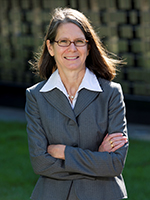
Nadine Aubry
Dean, College of Engineering
University Distinguished Professor
Northeastern University
Title: “Moving Particles in Microfluidics”
Abstract: Microfluidics, which refer to systems and methodologies aiming at manipulating fluids and their suspended particles at length scales on the order of tens or hundreds of microns, still present some fundamental challenges which have recently received attention. In this talk, I will present and address some of these challenges, including the manipulation and separation of micro- and nano-sized particles suspended in fluids and the directed assembly of particles at liquid-fluid interfaces into monolayers.
Bio: Dr. Nadine Aubry, University Distinguished Professor and Dean of the Northeastern University College of Engineering, is a widely known leader in the field of fluid dynamics, particularly the modeling of open flow turbulence and other complex flows and systems using advanced decomposition techniques and dynamical systems theory. She also made noteworthy contributions to the field of microfluidics. Dr. Aubry received the PhD. in Mechanical and Aerospace Engineering from Cornell University in 1987. For these and other contributions to the profession, Dr. Aubry was elected as a member of the National Academy of Engineering. Other recognitions include the Presidential Young Investigator Award from the National Science Foundation (NSF), the Ralph R. Teetor Educational Award from the Society of Automotive Engineers (SAE), and her selection as a Fellow of the American Physical Society (APS), the American Society of Mechanical Engineers (ASME), the American Association for the Advancement of Science (AAAS), and the American Institute of Aeronautics and Astronautics (AIAA).
She has served as Chair of the National Academies’ U.S. National Committee for Theoretical and Applied Mechanics (USNC/TAM) and is currently serving as Chair of the American Physical Society Division of Fluid Dynamics. Dr. Aubry has also been serving on many APS and ASME committees, numerous NSF and National Research Council review panels, and a certain number of advisory boards and review panels in the U.S. and in foreign countries, including Austria, France, Portugal, Singapore, South Korea. She has given numerous invited lectures on her research at various universities and conferences. Before joining Northeastern, she was the Raymond J. Lane Distinguished Professor, University Professor and head of the Department of Mechanical Engineering at Carnegie Mellon University.
2013 Lecture: Mary C. Boyce, Columbia University
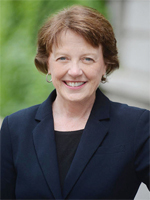 Mary C. Boyce
Mary C. Boyce
Dean, The Fu Foundation School of Engineering and Applied Science
Morris A. and Alma Schapiro Professor
Columbia University
Title: “Mechanics of Wavy Interfacial Layers in Hybrid Material Architectures: Nature-inspired Design to 3D-printed Prototypes”
Abstract: Many structured composites found in nature possess undulating and/or wrinkled interfacial layers that regulate mechanical, chemical, acoustic, adhesive, thermal, and optical functions of the material. Here, we study the role of the interfacial geometry and relative properties in governing the mechanics of the structured composite material architectures. Wavy compliant low-modulus organic seams that adhere stiff, mineralized skeletal structures, referred to as suture joints, are found to possess specific geometric waveforms including triangular, rectangular, trapezoidal and anti-trapezoidal as well as hierarchical structuring. Mechanics analyses reveal these waveforms to be tailored for particular loading conditions to provide advantages in load transmission and hence give desired stiffness, strength, toughness and damage tolerance. In a reversal of roles, relatively high modulus thin interfacial layers within a majority soft matrix tissue are also found to exhibit wavy geometries. The wavy geometry is a consequence of wrinkling of the interfacial layers and is reversible and tunable. Hence, modulation of wrinkling of the interfacial layers can be used to actively tailor and tune mechanical, acoustic, optical and chemical functions of the material. Analytical models, numerical simulations and experiments on 3D-printed prototypes are used to quantify the mechanics of the interplay between the composite geometry and inherent constituent material behaviors in governing the properties and functions of these natural hybrid materials.
Bio: Mary C. Boyce is the Dean of The Fu Foundation School of Engineering and Applied Science and Morris A. and Alma Schapiro Professor. Prior to joining Columbia, Dean Boyce served on the faculty of Massachusetts Institute of Technology (MIT) for over 25 years, leading the Mechanical Engineering Department from 2008 to 2013.
Dean Boyce has been widely recognized for her scholarly contributions to the field of Mechanics of materials, including election as a fellow of the American Society of Mechanical Engineers, the American Academy of Arts and Sciences, and the National Academy of Engineering. She also has been honored for her teaching at MIT, where she was named a MacVicar Faculty Fellow and received the Joseph Henry Keenan Innovation in Undergraduate Education Award. Dean Boyce earned her BS degree in engineering science and mechanics from Virginia Tech, and her MS and PhD degrees in mechanical engineering from MIT.
2013 Lecture: Emily A. Carter, Princeton University
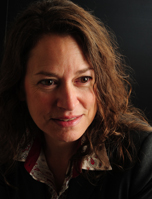 Emily A. Carter
Emily A. Carter
Gerhard R. Andlinger Professor in Energy and the Environment
Professor of Mechanical and Aerospace Engineering, and Applied and Computational Mathematics
Princeton University
Title: “Quantum Mechanics and the Future of the Planet”
Abstract: To preserve the planet for future generations, we must make major science and engineering breakthroughs in the way we harvest, store, transmit, and use energy. Dr. Carter’s research contributes to this effort by developing fast yet accurate quantum mechanics simulation methods to investigate materials and phenomena related to sustainable energy. Current projects include evaluating new materials for photovoltaics and photo-catalytic electrodes to convert sunlight into electricity and fuels, quantifying biofuel combustion kinetics, optimizing ion and electron transport in solid oxide fuel cells, evaluating mechanical properties of lightweight alloys for fuel-efficient vehicles, and investigating liquid lithium for fusion reactor walls. The latter two projects will be the focus of this talk. They exploit a promising quantum technique – orbital-free density functional theory (OFDFT) – that directly evaluates electron distributions. This method, orders of magnitude faster than standard DFT, can be used to study many thousands of atoms with quantum mechanics. Consequently, OFDFT can explicitly study, e.g., structure and motion of dislocations, and hence evaluate the origins of plasticity in metals from first principles. Recent advances in both theory and applications will be discussed.
Biography: Emily Carter is the Gerhard R. Andlinger Professor in Energy and the Environment and Professor of Mechanical and Aerospace Engineering and Applied and Computational Mathematics at Princeton University. She is the founding director of Princeton’s Andlinger Center for Energy and the Environment. Her current research focuses on enabling discovery and design of molecules and materials for sustainable energy.
Dr. Carter received her B.S. from UC Berkeley in 1982 and her Ph.D. from Caltech in 1987. After postdoctoral work at U. Colorado, Boulder, she spent 16 years on the faculty of UCLA as Professor of Chemistry and later of Materials Science and Engineering. She moved to Princeton in 2004.
The author of over 270 publications, Dr. Carter has delivered more than 430 invited lectures and serves on numerous international advisory boards spanning a wide range of disciplines. Her scholarly work has been recognized by numerous awards and honors, including the ACS Award for Computers in Chemical and Pharmaceutical Research; election to the American Academy of Arts and Sciences, the National Academy of Sciences, and the International Academy of Quantum Molecular Science; the August Wilhelm von Hoffmann Lecture of the German Chemical Society; and a Docteur Honoris Causa from the Ecole Polytechnique Federale de Lausanne.
2012 Lecture: Subra Suresh, Director, National Science Foundation
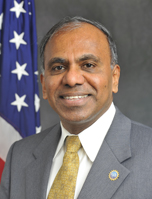 Subra Suresh, ScD
Subra Suresh, ScD
Director, National Science Foundation
Title: “Nanoscience as a Pathway to Innovation in Engineering and Biology”
Bio: Subra Suresh became Director of the National Science Foundation (NSF) in September 2010. Previously, he served as the Dean of the School of Engineering at the Massachusetts Institute of Technology (MIT). His work on mechanical properties, materials design, and discoveries of connections between cellular processes and human disease led to more than 240 journal articles, 21 patents, and three books.
Dr. Suresh received a Bachelor of Technology from the Indian Institute of Technology, Madras; a master’s from Iowa State University; and a Doctor of Science from MIT. Following postdoctoral research at the University of California, Berkeley, he joined the faculty of engineering at Brown University in 1983. He joined MIT in 1993 and served as Head of MIT’s Department of Materials Science and Engineering from 2000-2006.
At NSF, Dr. Suresh established several new initiatives including INSPIRE (Integrative NSF Support Promoting Interdisciplinary Research and Education), PEER (Partnerships for Enhanced Engagement in Research, in collaboration with USAID), and the NSF Innovation Corps.
Dr. Suresh’s many honors include election to the U.S. National Academy of Engineering, selection as fellow or honorary member in all of the major materials research societies in the U.S. and India, and last year received the 2011 Nadai Medal from the American Society of Mechanical Engineers.
2011 Lecture: Lance R. Collins, Cornell University
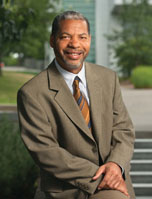 Lance R. Collins, Ph.D.
Lance R. Collins, Ph.D.
Joseph Silbert Dean of Engineering, Professor of Mechanical and Aerospace Engineering, Cornell University
Title: “Role of Turbulence in the Atmospheric Processing of Clouds”
Abstract: In a particular size range, a uniform distribution of particles or droplets in a turbulent gas will spontaneously cluster. The clustering is caused by the inertial mismatch between the heavy particles and the lighter surrounding gas; vortices in the flow “centrifuge” the particles into the interstitial straining regions. The resulting nonuniform particle concentration field enhances the rate of coalescence. This may explain the rapid development of cumulus clouds under conditions that are not well described by current meteorological models. In this talk, I will review our attempts to quantify inertial clustering in our direct numerical simulations, as well as discuss recent measurements made in the laboratory and in the atmosphere by my collaborators.
Biography: Professor Lance R. Collins is presently the Joseph Silbert Dean of Engineering at Cornell University. Prior to that, he served as the S. C. Thomas Sze Director of the Sibley School of Mechanical & Aerospace Engineering from 2005-2010, and he was Director of Graduate Studies for Aerospace Engineering 2003-2005. Over the past year, Collins served on Cornell’s Strategic Plan Advisory Council that wrote the university’s strategic plan. Collins joined Cornell in 2002, following 11 years as Assistant Professor, Associate Professor and Professor of Chemical Engineering at Pennsylvania State University. Since 1999, he also held a joint appointment in the Mechanical & Nuclear Engineering Department at Penn State, and in 1998 he was a visiting scientist at the Laboratoire de Combustion et Systemes Reactifs (a National Center for Scientific Research laboratory in Orleans, France) and at Los Alamos National Laboratory.
Professor Collins’ research combines simulation and theory to investigate a broad range of turbulent flow processes, including the motion of aerosol particles in turbulence (with applications to cloud processes and global climate modeling), mixing and chemical reactions in turbulent flames, turbulent breakup of drops and drag reduction due to polymer additives. In 1997 he received the Best Paper Award from the American Institute of Chemical Engineers, and in 2007 he was elected a fellow of the American Physical Society. He currently chairs the US National Committee on Theoretical & Applied Mechanics under auspices of the National Academies.
Professor Collins earned his B.S.E. in 1981 at Princeton University and his M.S. in 1983 and his Ph.D. in 1987 at the University of Pennsylvania, all in Chemical Engineering.
2009 Lecture: Bradley Nelson, ETH Zurich
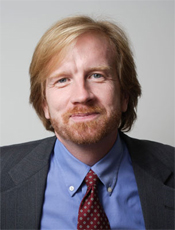 Bradley Nelson, Ph.D.
Bradley Nelson, Ph.D.
Professor of Robotics and Intelligent Systems, ETH Zurich
Title: “Micro and Nano Robotics”
Abstract: Microrobotics has recently entered the phase in which sub-mm sized autonomous robots are being realized. While the potential impact of these devices on society is high, particularly for biomedical applications, many challenges remain in developing genuine microrobots that will be useful to society. This talk focused on approaches to the locomotion of microrobots in liquid and on solid surfaces. Issues in the design of external systems for providing energy and control of microrobots must be considered, and the use of externally generated magnetic fields in particular appears to be a promising strategy. Theoretical and experimental issues will be discussed, functionalization of the devices, and efforts to scale microrobots to the nanodomain were presented.
2008 Lecture: James R. Rice, Harvard University
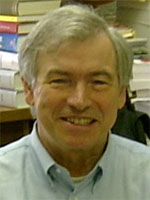 James R. Rice
James R. Rice
Mallinckrodt Professor of Engineering Sciences and Geophysics
Department of Earth and Planetary Sciences
School of Engineering and Applied Science, Harvard University
Title: “Thermo-hydro-mechanics of earthquake rupture”
Abstract:Field observations of maturely slipped faults show a generally broad zone of damage by cracking and granulation, but nevertheless suggest that shear, and therefore heat generation, in individual earthquakes takes place with extreme localization to a zone < 1-5 mm wide within a finely granulated fault core. Relevant fault weakening processes during large crustal events are therefore likely to be thermal and, given the porosity of the damage zones, it seems reasonable to assume groundwater presence. It is suggested that the two primary dynamic weakening mechanisms during seismic slip, both of which are expected to be active in at least the early phases of nearly all crustal events, are (1) Flash heating at highly stressed frictional micro-contacts, and (2) Thermal pressurization of fault-zone pore fluid. Both will be shown to have characteristics which promote extreme localization of shear. Macroscopic fault melting will occur only in cases for which those processes, or others (thermal decomposition, silica gelation) which may come on line at sufficiently large slip, have not efficiently reduced heat generation and thus limited temperature rise. Elementary modeling of mechanisms (1) and (2), constrained with lab-determined hydrologic and poroelastic properties of fault core material and high-speed friction studies, suggests that, within considerable uncertainties in interpretation, seismic data on the fracture energy of earthquakes and its variation with slip in the events can be plausibly described. The mechanisms suggest that faults may be statically strong but dynamically weak under typical seismic conditions. Progress at more advanced spontaneous dynamic rupture modeling, done with Hiroyuki Noda and Eric Dunham using procedures that embody mechanisms (1) and (2), and explicitly solve diffusion equations for temperature and pore pressure variations at multi-millimeter scales along a fault during rupture, will be described.
2007 Lecture: John Hutchinson, Harvard University
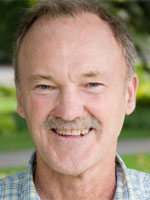 John Hutchinson
John Hutchinson
Abbott and James Lawrence Professor of Engineering
Harvard University
Title: “Recent Developments in Thin Film Mechanics”
Abstract:Thin films are ubiquitous in modern technology as adhesives, protective and wear coatings, and as fundamental structures in electronic and photonic devices and packages. Layered structures comprised of films of metals, ceramics and polymers are commonly manufactured with large mismatches in elastic moduli and in coefficients of thermal expansion to achieve special functional purposes. A rich trove of interesting deformation and failure phenomena for thin films has been observed. Considerable progress in understanding the mechanics underlying these phenomena has occurred over the last decade. Mechanics principles and approaches have been developed that provide guidelines for circumventing thin film failure modes. An overview of this progress will be given with particular emphasis on delamination phenomena. Examples will be drawn from many application areas, including thermal barrier coatings for turbine engines, diamond coatings for wear enhancement, and metal films on flexible polymer substrates for electronic data storage devices.
2006 Lecture: Friedrich Prinz, Stanford University
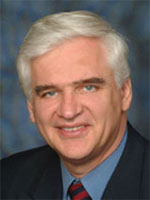 Friedrich Prinz, Ph.D.
Friedrich Prinz, Ph.D.
Chair, Department of Mechanical Engineering, Stanford University
Title: “High-Performance Solid Oxide Fuel Cells For Low Temperature Operation”
Abstract: Fuel cells convert chemical energy directly into electrical energy with higher efficiency when compared to traditional heat expansion engines. Currently, two types of fuel cells are the subject of intense study. Polymer electrolyte membrane fuel cells (PEMFCs), commonly made of proton conducting polymeric membranes, need to be operated below 100°C to keep membranes sufficiently hydrated. In contrast, solid oxide fuel cells (SOFCs) containing solid oxide-ion conducting electrolytes require operational temperatures in excess of 700°C to achieve power densities comparable to that of PEMFCs due to the limited oxide-ion conduction in oxide membranes with thicknesses of a few to tens of micrometers.
Our research shows that sub-micron thin SOFCs consisting of traditional oxide-ion conducting electrolyte materials, such as Yttria Stabilized Zirconia (YSZ), can be operated below 400°C. We have achieved power densities of 200mW/cm2 and 400mW/cm2 at 350°C and 400°C, respectively. The SOFC structures in the present study were fabricated with the help of thin film deposition processing and lithographic silicon etching techniques.
The high power densities achieved are due to both the reduction of electrolyte thickness and the enhanced charge transfer reaction rates at the interfaces between the nano-porous electrodes (cathode and/or anode) and the nano-crystalline thin electrolyte. Strong electro chemical potential gradients are considered the origin for a high density of oxide-ion vacancies in the vicinity of the surface, which in turn lead to fast reaction kinetics and high current density. Improved SOFC performance at low operating temperatures promises new applications in areas such as transportation and portable electronics.
About the Tedori-Callinan Lecture
Letetia Tedori-Callinan
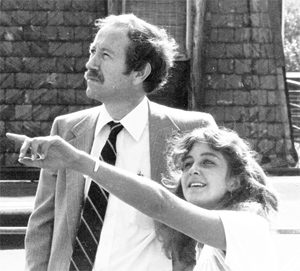 Letetia “Letty” Tedori-Callinan (BSE, MEAM, 1983), with her husband Jim, endowed the Tedori-Callinan Lecture Series in MEAM in honor of her late father Fred Tedori, Sr., “who always placed such an emphasis on education and strongly encouraged his daughters to become engineers.”
Letetia “Letty” Tedori-Callinan (BSE, MEAM, 1983), with her husband Jim, endowed the Tedori-Callinan Lecture Series in MEAM in honor of her late father Fred Tedori, Sr., “who always placed such an emphasis on education and strongly encouraged his daughters to become engineers.”
Letty worked on many projects during her undergraduate studies at Penn, exhibiting great curiosity, creativity, diligence, responsibility, and attention to detail,all while maintaining one of the highest academic records in the department.
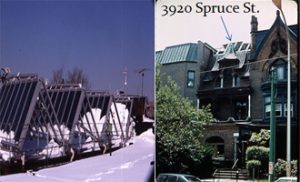 While at Penn Enigneering, Letty took part in developing and running “SolaRow,” the first solar heated retrofitted house in Philadelphia (see photo).
While at Penn Enigneering, Letty took part in developing and running “SolaRow,” the first solar heated retrofitted house in Philadelphia (see photo).
She also participated in the design and construction of a sophisticated experimental facility for studying the effects of wind on thermo-solutal behavior of salt-gradient solar ponds in the MEAM wind tunnel.
